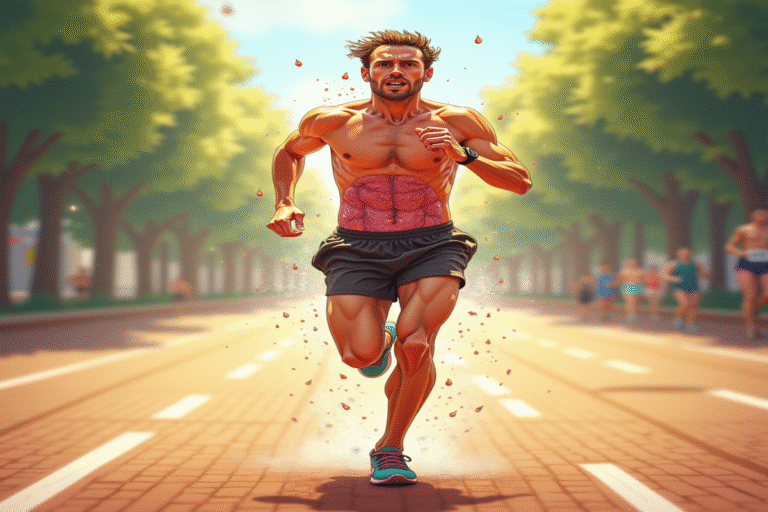Imagine running on a hot summer day. Within minutes, your skin becomes moist, and droplets form on your forehead. This natural process—sweating—is one of your body’s most ingenious survival mechanisms, yet it’s something we often take for granted or even consider unpleasant. Behind this seemingly simple bodily function lies an intricate physiological marvel that’s essential to human survival.
The remarkable engineering of your sweat glands
Your skin contains between 2 and 4 million sweat glands, creating a complex cooling network throughout your body. These specialized glands come in two main varieties:
- Eccrine glands: The workhorses of thermoregulation, these glands cover most of your body and produce the watery sweat associated with exercise and heat.
- Apocrine glands: Located mainly in your armpits and groin, these become active during puberty and produce a thicker secretion. This secretion interacts with bacteria to create body odor.
When your core temperature rises above 98.6°F (37°C), your hypothalamus—your body’s thermostat—sends signals through your nervous system to activate these sweat glands. This biological air conditioning system is highly efficient: a single eccrine gland can produce up to 10 nanoliters of sweat per minute.
The physics behind the cooling power of sweat
Sweating cools you through evaporative cooling. As sweat evaporates from your skin, it changes from a liquid to a gas, a process that requires energy. This energy comes from heat drawn from your skin, effectively lowering your body temperature.
This explains why humid days feel hotter. When the air is already full of moisture, your sweat can’t evaporate efficiently, reducing your body’s natural cooling and leaving you uncomfortable and sticky.
What’s actually in your sweat?
Contrary to popular belief, sweat isn’t just salt water. A typical drop of sweat contains:
- Water (99%)
- Sodium and chloride (the components of salt)
- Potassium
- Calcium
- Magnesium
- Trace amounts of urea and lactate
- Small amounts of antimicrobial peptides that help protect your skin
While the myth that “sweating detoxifies the body” persists, your liver and kidneys handle nearly all detoxification. Sweat’s main role is thermoregulation, not toxin removal.
The health significance of sweating
Beyond keeping you cool, sweating plays several other important roles in your health:
Preventing heat-related illness
When working properly, your sweat response prevents dangerous conditions like heat exhaustion and potentially fatal heat stroke. The average person can produce between 0.5 and 2 liters of sweat per hour during intense exercise—enough to lower body temperature by several degrees.
Supporting skin health
The natural moisturizing factor (NMF) in sweat helps maintain your skin’s barrier. Sweat also contains dermcidin, an antimicrobial peptide that helps protect against harmful microorganisms.
Signaling fitness levels
As you become more physically fit, your body becomes more efficient at sweating. Trained athletes usually start sweating earlier during exercise and produce more sweat than untrained people—a sign that their cooling systems have adapted to regular physical demands.
The fascinating science of individual sweat patterns
Your sweating pattern is as unique as your fingerprint. Genetics, sex, age, and environment all influence how, when, and how much you sweat:
- Men vs. women: Men generally sweat more than women, likely due to differences in body size, metabolism, and hormones.
- Age factors: Children’s sweat glands aren’t fully developed, which explains why they’re at higher risk for overheating. As we age, our sweat response tends to become less effective.
- Acclimatization: People who live in hot climates develop more efficient sweating responses than those in cooler regions.
When sweating signals health concerns
Changes in your sweating patterns can sometimes indicate underlying health issues:
- Hyperhidrosis: Excessive sweating that affects about 3% of people, often without obvious triggers.
- Anhidrosis: The inability to sweat normally, which can be dangerous as it prevents proper cooling.
- Night sweats: When not caused by a hot sleeping environment, these could signal infections, hormonal disorders, or other medical problems.
- Sweating during meals: Known as gustatory sweating, this can be harmless or, in some cases, related to neurological disorders.
Researchers are also developing wearable sensors that analyze sweat composition to monitor hydration, electrolyte levels, and potentially detect certain diseases—turning this normal bodily function into a non-invasive health monitor.
Embracing the sweat
The next time you feel that familiar dampness during exercise or on a hot day, think about the extraordinary biological process happening. Your body is performing a thermodynamic feat, precisely controlling your temperature through millions of tiny glands working in harmony. Far from something to hide or suppress, sweating represents one of evolution’s most effective solutions for human survival and performance.
Understanding the science of sweat not only answers our curiosity about our bodies but also helps us make better choices about hydration, exercise, and noticing potential health problems. In the complex engineering of the human body, few systems show such efficient design as our ability to perspire.





